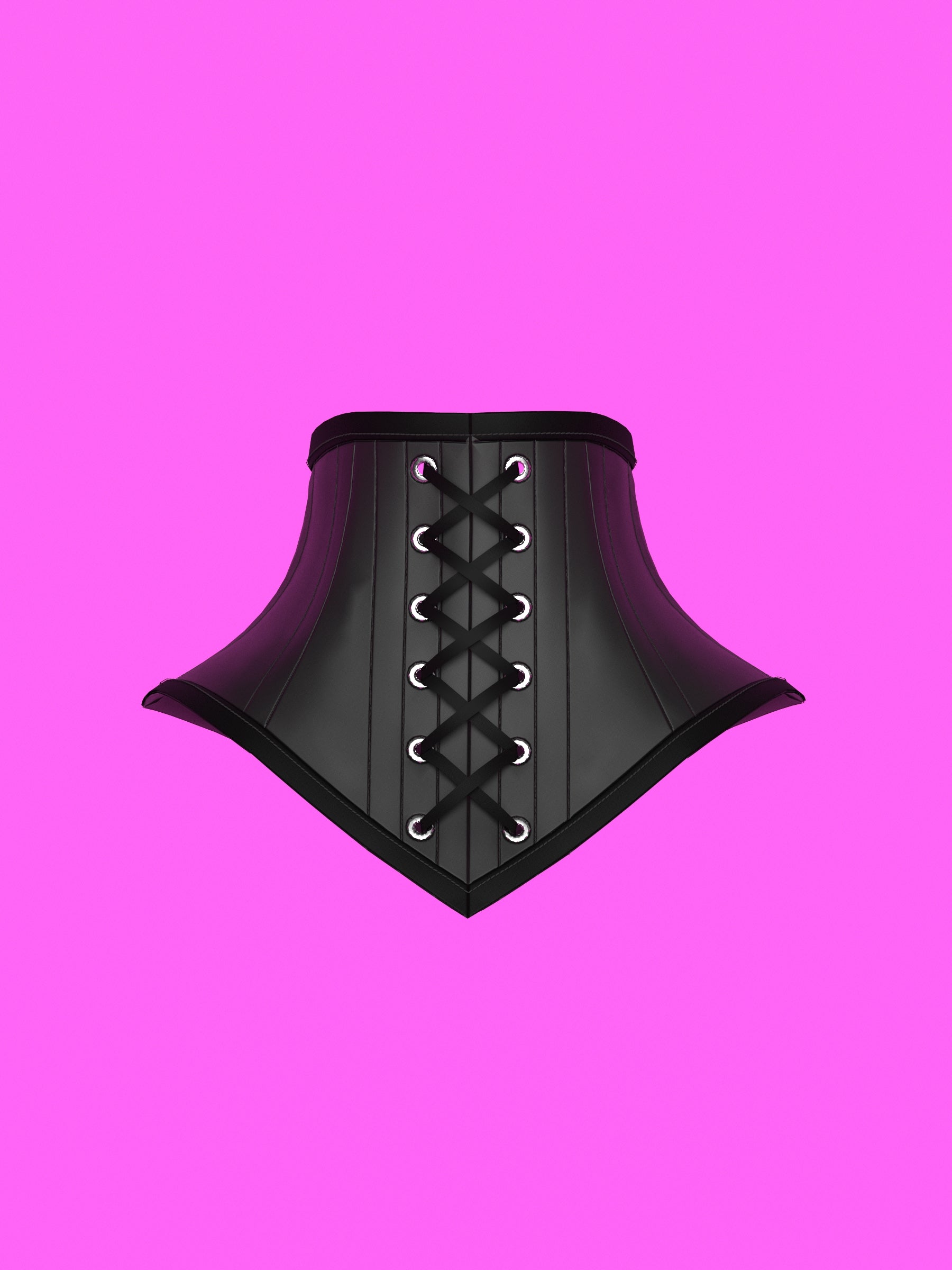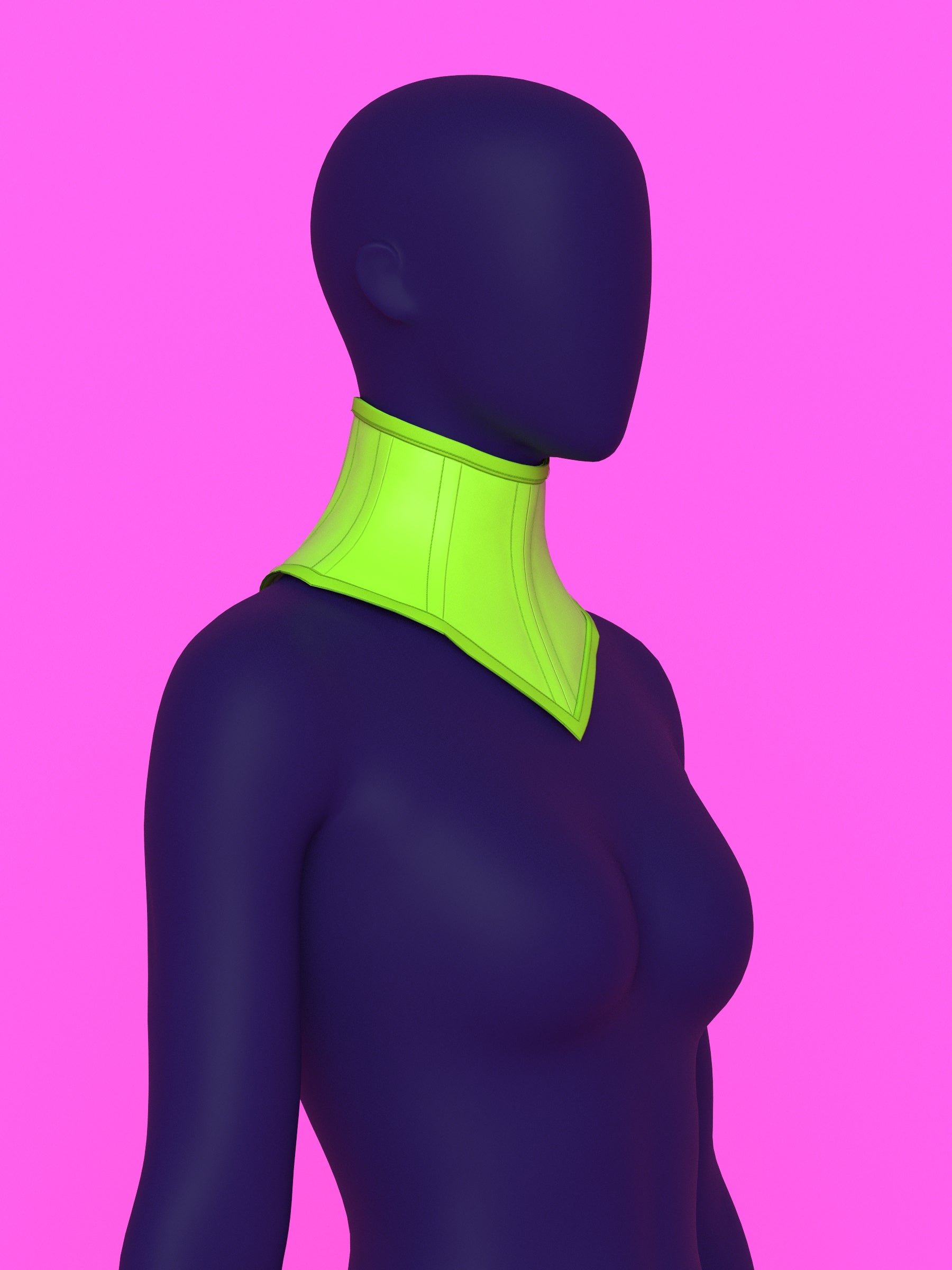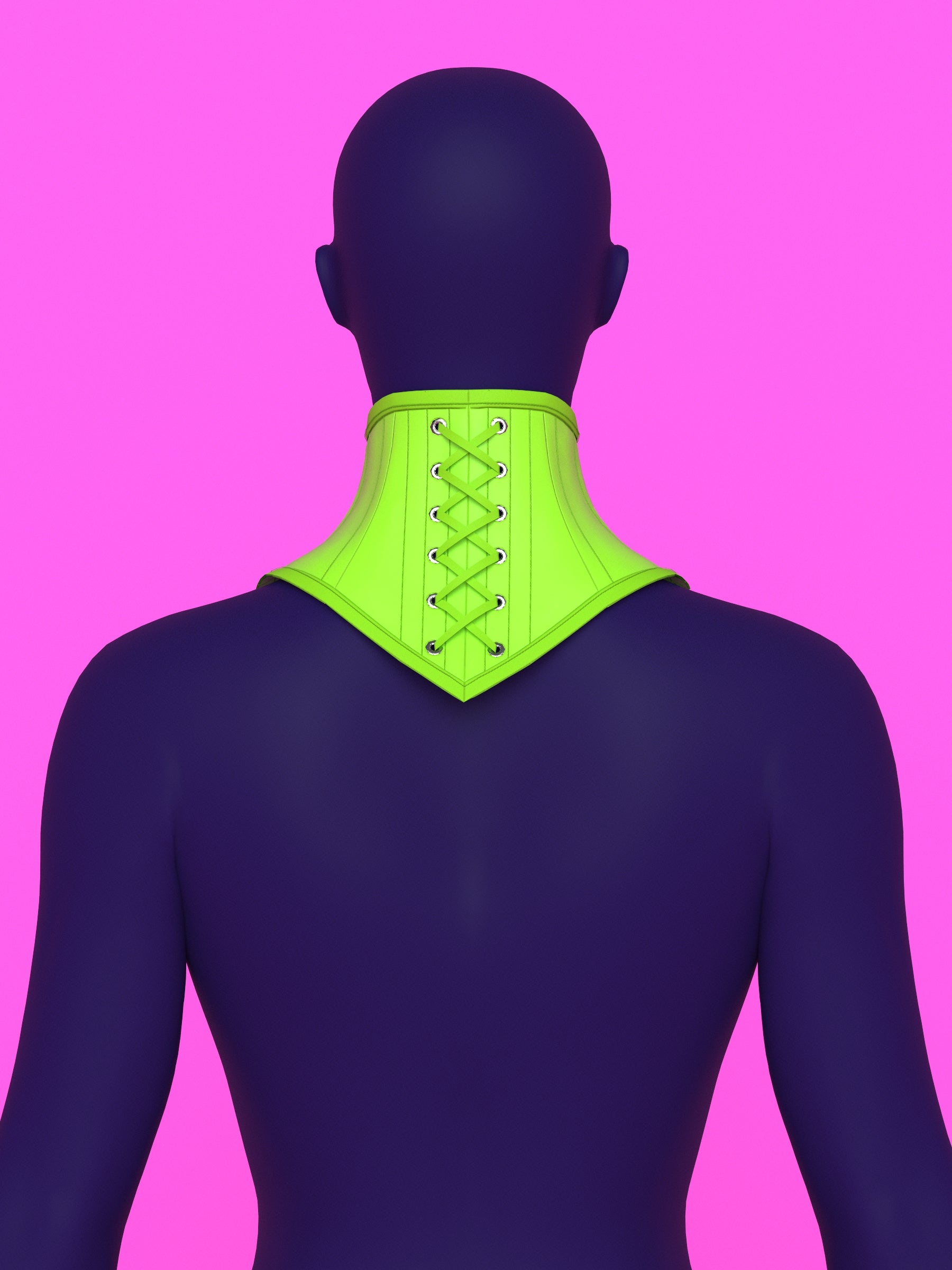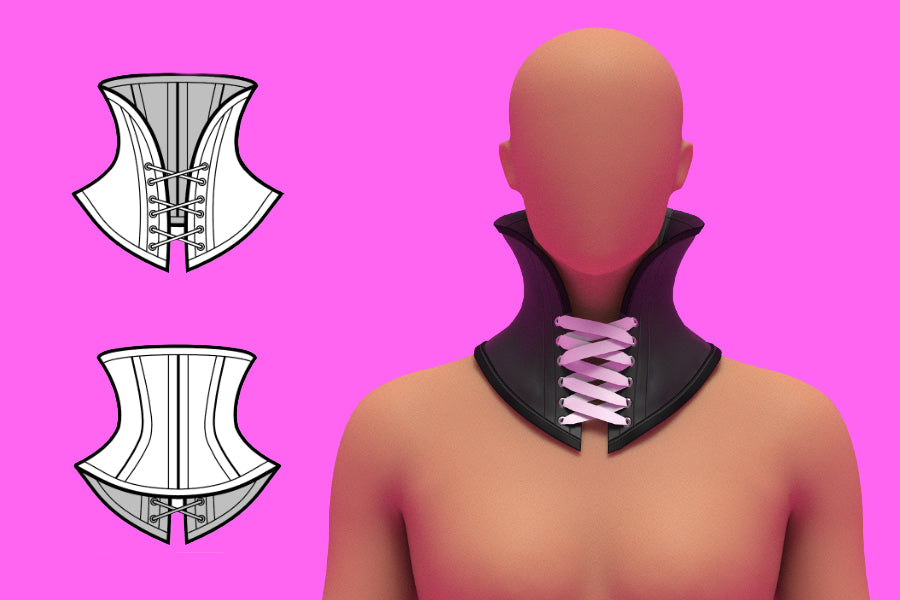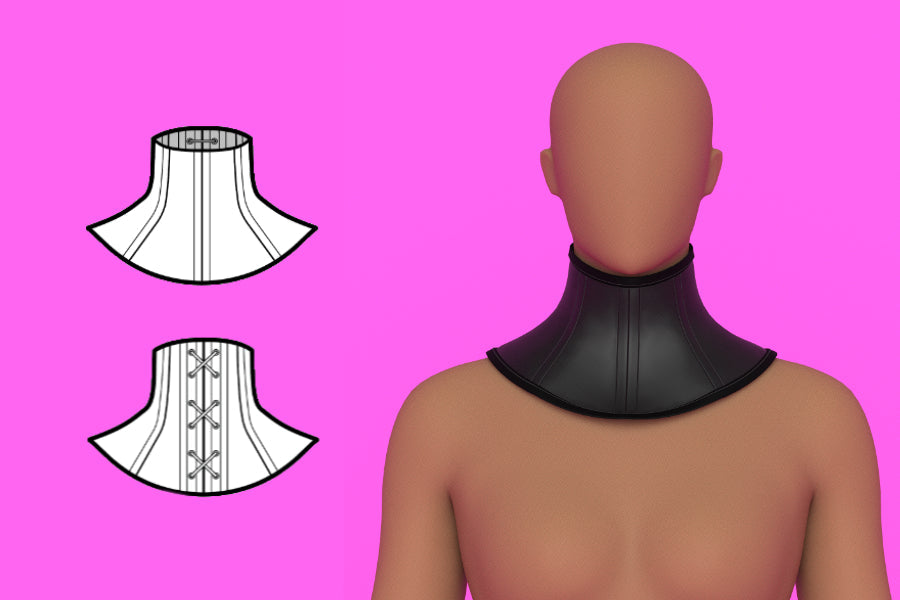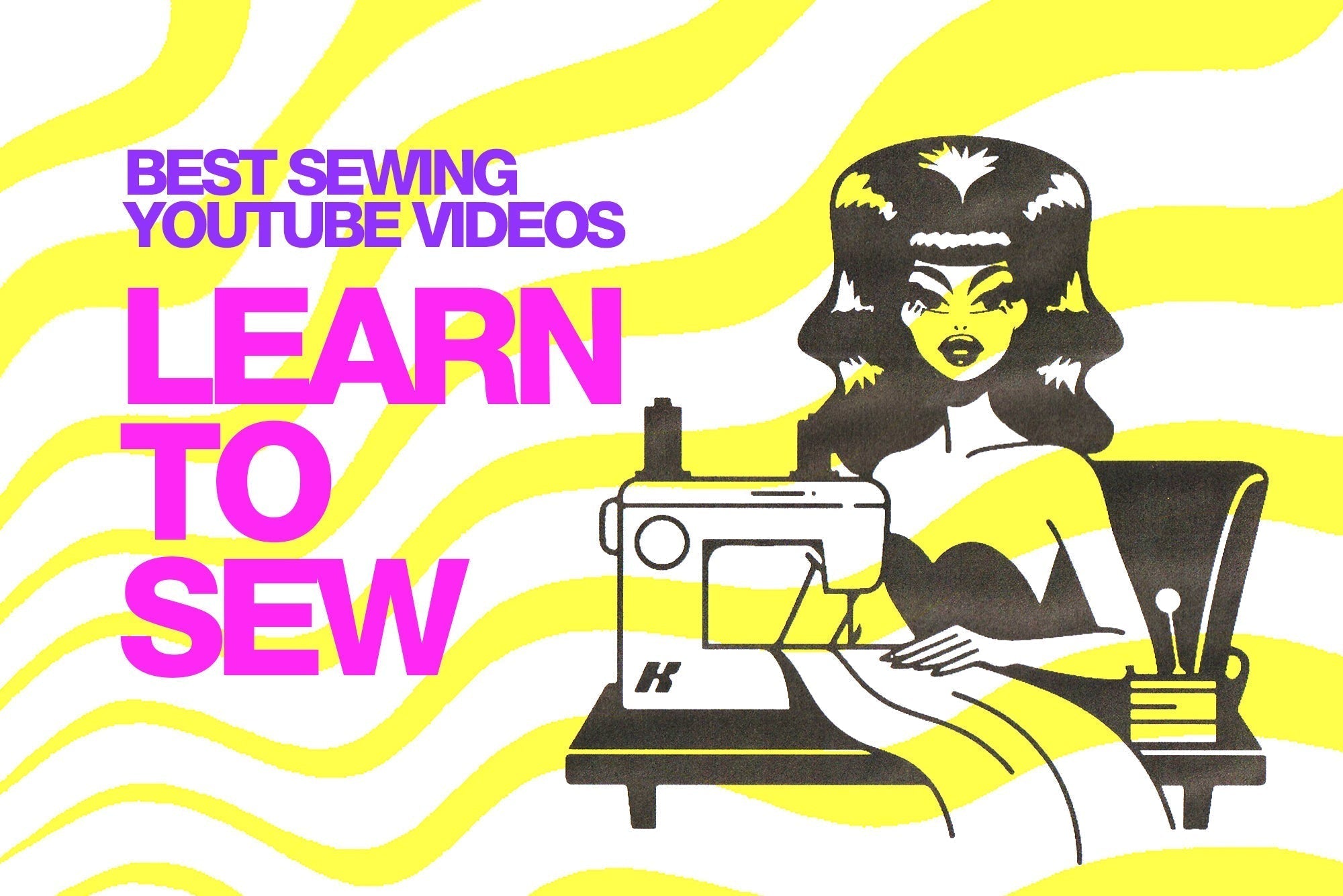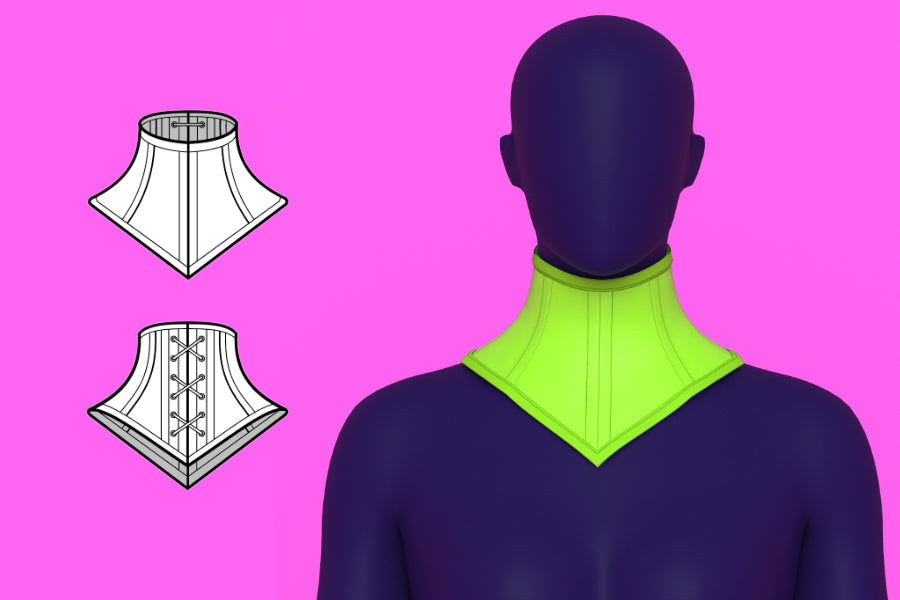
How to Sew a V Pointed Neck Corset
Saltar a instrucciones
Descripción general
Learn to sew our V-Cut Pointed Neck Corset Sewing Pattern, a bold, unisex design made for drag queens, performers, and anyone who loves dramatic statement pieces. With a sharp bottom edge that sculpts the neckline, this pattern blends structure and style for an instantly striking finish. Available in three size ranges—XS-S, M-L, and XL-2XL—it’s drafted to fit drag and unisex proportions. Please refer to the size chart below to select your ideal range.
Yardas de tela
The fabric yardage below is for fabric bolt widths of 54" or more.
| Size | Shell Fabric | Lining Fabric | Bias Trim |
|---|---|---|---|
| XS-S | 0.5 | 0.5 | 1.5 |
| M-L | 0.5 | 0.5 | 1.5 |
| XL-2XL | 0.5 | 0.5 | 1.5 |
Telas y artículos de mercería
- Non-stretch faux leather, vinyl, coutil, canvas, or denim for the shell fabric.
- Non-stretch cotton, polyblend, coutil, or canvas for the lining fabric (lining is optional).
- 6mm-8mm Boning. Plastic boning, rigilene boning, zip ties, or steel boning.
- Optional fusible interfacing depending on your chosen fabric thickness.
- Double sided bias tape (3/8" or 1/2" when folded).
- 1/4" grommets or eyelets.
- Ribbon or string.
Detalles de tallas
This sewing pattern is drafted in our exclusive Drag Queen Sizes, developed from standard men’s measurements and refined for drag-ready proportions. Each size includes a neck base circumference. Our drag sizing maintains average men’s proportions like neck width, shoulder width etc... ensuring a comfortable and realistic fit for drag. While designed with drag performers in mind, these patterns are UNISEX and can be worn by any gender who matches the size measurements listed below.
| Size | Neck Base | Mens Chest | Drag Chest (Padded) |
|---|---|---|---|
| XS-S | 15-16 | 33-37 | 36-40 |
| M-L | 16-18 | 39-45 | 42-48 |
| XL-2XL | 18-22 | 47-53 | 50-57 |
Instrucciones de costura
Color Guide

Fabric Pieces
After assembling your paper pattern, you should have the following pieces: Center Front, Side Front, Side Back, Center Back with eyelets for lacing.
Depending on your chosen fabric, decide how many layers you want to use. The preferred combination is a shell made from faux leather or vinyl, and a lining made from a non-stretch cotton or polyester fabric.
Cut two mirrored pieces of the shell fabric: (2) mirrored Center Front pieces, (2) mirrored Side Front pieces, (2) mirrored Side Back pieces, (2) mirrored Center Back pieces.
If you’re adding a lining, repeat the same cuts for the lining fabric. Use interfacing only if your main fabric is lightweight or not faux leather. For best results, we recommend using faux leather or vinyl.

Interfacing
If you are not using faux leather, the first step is to fuse interfacing to your fabric. Place the sticky or glue side of the interfacing against the wrong side of either the lining or shell fabric, depending on your preference. Press to fuse before beginning assembly.
If you’re experienced with corset construction, feel free to use your preferred type of interfacing or stabilizing method. You can adjust the technique based on your own experience and desired structure.

Center Front Assembly
Gather your number 1 center front shell pieces and place them right sides together, aligning the notches. Sew a ½ inch (1.3 cm) seam along the center front edge, the letter A edge.

Once sewn, press the seam open and flatten the allowance fabric away from the center front. Topstitch along both sides of the seam to create two boning channels. Ensure each tunnel is wide enough to fit your boning—6–8 mm boning fits best in a 10 mm channel.

Side Front Assembly
Take your number 2 side front pieces and align them right sides together with the center front assembly (letter B edges), matching the notches. Sew using a ½ inch (1.3 cm) seam allowance.
This time, do not press the seam open. Instead, press the seam allowance toward the side front, away from the center, and topstitch to create one boning channel. You may add a second channel if desired, but one is sufficient for structure.

Continue sewing in the same way by attaching the number 3 side back pieces to the number 2 side front pieces, and the number 4 center back pieces to the number 3 side back pieces. Make sure the C and D edges are aligned correctly before sewing.

Lining Assembly
Once all of your shell pieces are sewn together, repeat the same process for the lining if you are using one. For the lining, do not create boning tunnels. Instead, edge stitch along the pressed seam allowances for stability.

Join Shell and Lining
Place the shell and lining right sides together and sew along the center back edges only.

After sewing, turn the neck corset right side out and press the center back edges flat with an iron. Pin the shell and lining together to keep everything aligned and secure for now.

Eyelet Tunnels
Create eyelet tunnels along both center back edges. Start by stitching one tunnel about 0.4 inches (10 mm) away from the center back edge. Next to that, mark a middle column about 0.5 inches wide for your eyelets or grommets. Then stitch another tunnel 0.4 inches (10 mm) wide on the opposite side of that column. Each set of eyelets should have two tunnels running alongside them. Repeat for both center back edges.

Insert Boning
Measure each boning channel to find its length. Subtract one inch from the total length to leave a half inch clearance at both the top and bottom edges for bias tape binding. You can use plastic boning, rigilene boning, zip ties, or steel boning if preferred. Note that steel boning usually needs separate boning channels rather than using seam allowances.
After cutting your boning pieces, smooth the edges by melting them slightly or wrapping them with masking tape to prevent punctures. Insert each bone into its corresponding tunnel.

Bias Tape Binding
You can use pre-made double-fold bias tape, about 0.4 to 0.5 inches wide when folded, or make your own from any non-stretch or satin fabric. To attach it, unfold the bias tape and place it along the bottom edge of the neck corset with right sides facing. Leave about half an inch to one inch of extra tape at the center back end so you can fold it in later.
Sew along the bottom edge using a seam allowance that matches your bias tape width. After sewing, fold the bias tape over to the inside of the corset, tucking in the raw ends at the center back. Topstitch or edge stitch along the inner edge to secure all layers. Repeat the same process for the top edge of the neck corset.
Watch this video on how to sew bias binding on sharp angels https://www.youtube.com/shorts/oIGWphB9pCs



Add Eyelets or Grommets
Use your paper pattern as a guide to mark the placement of your eyelets or grommets along both center back edges. You can add more if you prefer, as long as they’re in even pairs for proper lacing. Six eyelets are standard, but you can use eight or ten if you want the lacing closer together.
Once marked, use a hole punch or awl to create the holes and install your eyelets or grommets within the center tunnel created earlier. Make sure they are aligned evenly on both sides.

Lacing
Finish by lacing up the back of the corset using your preferred material such as ribbon, satin cord, or shoelaces. There are many ways to lace a corset, so explore different methods online or on YouTube to find the look and fit you like best. Customize it however you prefer.

Additional Tips
There are many ways to make a corset, so feel free to adjust the process to suit your design. You can skip the lining if you prefer, or sew separate boning channels using cotton ribbon instead of using the pressed seam allowances, which works better for steel bones. Experiment with different fabrics, lacing placements, or closure types. You can place eyelets at the center front, along the sides, or even add a zipper if you want. Make it your own.
Get the Pattern


